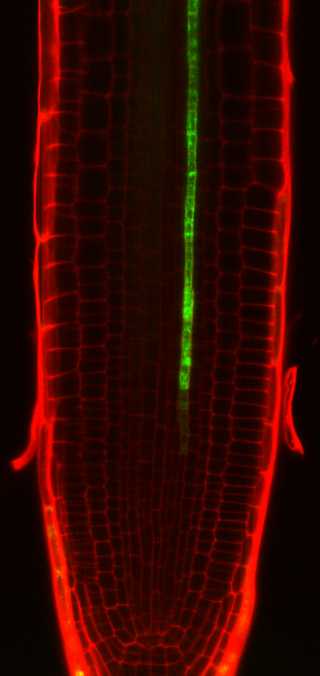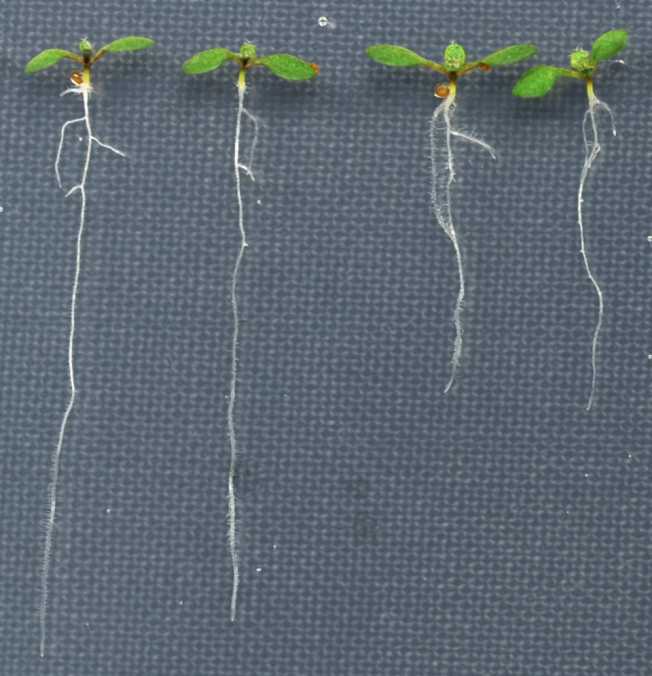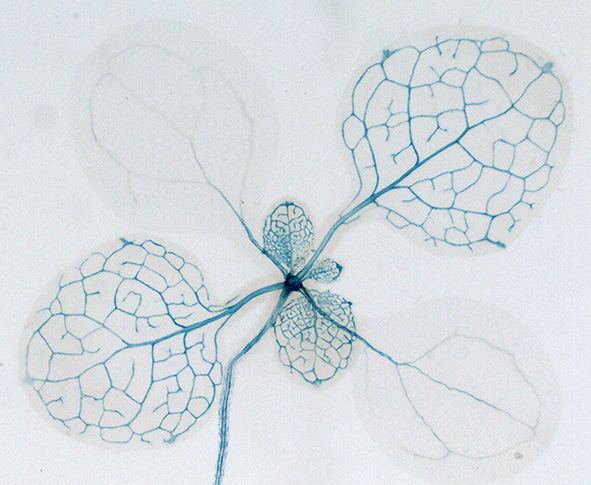Phloem development and function - E. Truernit
Phloem Development and Function
One of the outstanding features of plants is that they can produce carbohydrates (sugars) through photosynthesis – the process by which light energy is converted into chemical energy. Since in higher plants not all organs are photosynthetically active, these sugars have to be transported from the sites of photosynthesis (mainly leaves) to the tissues that are dependent on carbohydrate import (roots, seeds, developing organs, etc.). This long-distance transport of sugars occurs in the phloem, which is part of the plant vascular tissue. In addition, the phloem transports signaling molecules and is therefore also important for the communication between the different plant organs.
In every newly forming or growing organ, new phloem cells have to develop and need to be connected to the already existing phloem network within a plant. To meet the requirements for long-distance transport, phloem cells are highly specialized cells and thus undergo a very unique cell differentiation program. Our long-term goal is to understand how phloem cell differentiation is regulated on the molecular level and also in the context of plant organ growth.
-

Green Fluorescent Protein (GFP) expressed under control of a phloem specific promoter in Arabidopsis roots.
-

Root phloem development is impaired in plants with a mutation in the OCTOPUS gene. Consequently, these mutant plants (the two plants on the right hand side) display a short root phenotype when compared to wild type plants (the two plants on the left hand side). -

Expression of the OCTOPUS gene in leaves. The promoter of this genes was fused to the reporter gene beta-GLUCURONIDASE. Blue color indicates OCTOPUS promoter activity.
Contact
Inst. f. Molekulare Pflanzenbiol.
Auguste-Piccard-Hof 1
8093
Zürich
Switzerland